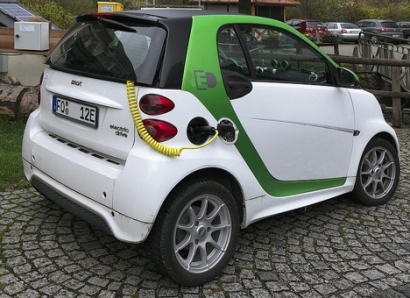
This growth in EV adoption was fostered by the injection of industry investments and government mandates for clean transportation. The change was also enabled by improvements in charging infrastructure, including customer convenience with integrated payment options, connector standardization, scalable technology, and fleet electrification. As we look back on 2020 and forward to the new year, the future for e-mobility is bright.
Key 2020 Takeaways
There was a substantial rise in the accessibility to new capital by the major EV automakers as the EV market share grew, translating into a significant production expansion effort. For the first time on record private equity firms globally did more cleantech deals during 2020 than in oil and gas, according to PitchBook data as of early December.
Larger valuations of the future EV market size are expected to ease access to capital in the coming year.
Focus on Driver Convenience
The e-mobility industry made significant strides during 2020 to make things easier and better for the drivers. Perhaps most importantly, the ease of use of the technology is rapidly approaching the ease of filling up at a gas station.
For example, the development of Plug and Charge technology has emerged, a universal data sharing and communication protocol across system platforms.
Plug and Charge enables EVs and charging equipment to communicate, authenticate, and bill customers via the charging cable. This technology provides drivers the freedom to pay their charge without the need for an RFID membership card, a smart phone application, or a credit card reader.
Introduction of Future-Proof Hardware
One significant evolution in 2020 EV charging was an increased focus on modular and scalable charging solutions. These advances provide charging station owners and operators with the flexibility to increase charger power levels as EV charging capabilities advance.
With this flexible technology, charger power can be increased in 25kW increments, starting at 25kW and increasing to 350kW and beyond. This technology represents a future-proof, ‘no regret’ charging investment for businesses and fleets as they continue to scale up their charging infrastructure.
Fleet Electrification
The e-mobility market’s reach expanded beyond passenger vehicles during 2020 into classes like buses, trucks, and other vehicles. Fleet electrification is critical for energy freedom and provides a benefit for the end customer. While we await 2020 totals, the International Energy Agency reports that global sales of electric trucks hit a record in 2019 with over 6,000 units, while the number of models continues to expand.
According to a new report by Allied Market Research, the global electric bus industry was estimated at $18 billion in 2019 and is expected to hit $31 billion by 2027. This expansion would translate into a compound annual growth rate (CAGR) of 12.6% from 2020 to 2027.
The future of fleet electrification is bright, with rising demand for electric buses including fuel-efficient, high-performance, and low-emission designs, increasingly stringent government rules and regulations for vehicle emissions, and a reduction in battery prices.
Looking Forward to 2021
Customer convenience will continue to increase in 2021 as EV charger companies build on scalable technology.
Chargers will get even faster and more efficient in power ratios to charge EVs more quickly. Some high power smart charging systems can power EVs to an 80% charge in 15 minutes on average and that number will improve over the near term. Additionally, we will continue to see a rise in fleet electrification and improvements in technology. There will be several focal points in the growth of the EV market this year.
Continued Fleet Electrification
A new study on EV range and fleet suitability found that 64% of fleet vehicles could be switched to a comparable fully electric or plug-in hybrid option for less money over the same seven-year service life. The Geotab study also found that for nearly 50% of fleet vehicles today, an existing battery electric vehicle is available that would be range-capable for over 98% of daily needs.
Companies looking to diversify their business model and think about the future and sustainability will rapidly embrace EV fleets this year.
Reduced Footprint and Size of Chargers
Chargers are entirely disconnected from the fuel grid, enabling the opportunity to install charging anywhere and everywhere. At the same time, more homeowners will opt to add a charging unit this year, more businesses will add charging infrastructure as the overall size, cost, and a smaller footprint is continuously reduced.
Continuing 2021 EV market growth presents a host of new opportunities to discuss charging infrastructure and requirements in the near future.
About the Author: Jane Hunter, Tritium CEO, has extensive experience in operations, projects, and commercial management across multiple industries including aerospace, fast-moving consumer goods (FMCG), gaming, and entertainment. Her experience includes seven years at Boeing in roles as a company director and Chief Operating Officer of the global Phantom Works division which was responsible for the rapid prototyping and development of advanced technologies.
Jane has a Bachelor of Arts and a Bachelor of Laws (Hons) from the University of Queensland and is a qualified barrister.

